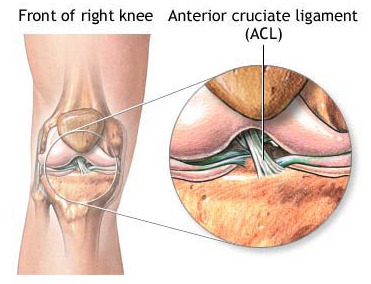
What Exactly Is ACL?
ACL injuries are most commonly seen among those people who are very much active sports. Anterior Cruciate Ligament which is the medical abbreviation for ACL is a band of tissue within the knee. The function of ACL is to hold the bones of your knee together thus keeping your knee stable. It helps in controlling excessive knee motion by limiting joint mobility.
Whenever ACL gets stretched or tear it receives severe making the person to experience a sharp pain. This damage commonly occurs in the cases where the person turns sharply or moves suddenly while you’re running or jumping.
Any sort of damage to ACL will make it hard for the person to apply any sort of pressure on his knee even during walking.
Slight wear & tear of ACL can be healed over the time with proper medication & physiotherapy but however in the cases where ACL is completely torn it is a must to get the ACL surgery done so as to replace the damaged ACL.
What Is ACL Surgery?
ACL surgery or ACL reconstruction is the surgical procedure which is performed to remove the torn Anterior Cruciate Ligament & is replaced by a piece of tendon taken from your other knee or it could be acquired from a deceased donor.
Generally, ACL surgery is an outpatient procedure which is performed through small incisions around your knee joint. This surgical procedure is performed by an expert doctor who specializes in surgical procedures of the bones and joints (Orthopedic Surgeon).
“Now, before getting into the deeper context of ACL Surgery let us give you a clear idea about what exactly is a ‘Knee Ligament’ & the types of ligaments in the knee”
What Is A Knee Ligament?
A ligament can simply be interpreted as a short band of tough fibrous, generally a connective tissue which is mainly composed of long, stringy collagen molecules. The major purpose of ligaments is to act as a bridge that connects bones to other bones in and around the joints. This doesn’t mean that ligaments will also be connecting the muscles to bones which in fact is the function of tendons. Ligaments control the extent of mobility of a joint, or it functions to prevent certain movements altogether.
Types Of Ligaments In The Knee:
Let us get a better understanding of the different types of ligaments that are present in the knee.
What Conditions Lead To Knee Ligament Injuries?
The most common conditions that may lead to ligament injuries are
These set of incidents may predispose you to a Ligament Sprain or Meniscus Tear.
ACL Tear Symptoms:
The most common symptoms of ACL injury include
Preparation For The ACL Surgery?
Before The Surgery-
You are likely to be recommended several weeks of physiotherapy in the order you help you regain the lost motion of your knee & to strengthen your muscles & as well as to reduce pain & swelling. Going directly into surgery procedure with a stiff, swollen knee often results in poor healing and the chances of not regaining full range of motion even after a successful surgery are high.
During The Surgery Procedure-
The patient undergoing this surgery will be given general anesthesia so that he stays unconscious during the surgical procedure. ACL reconstruction these days requires only small incisions to be made one for holding a thin tube-like a video camera (Arthroscope) and others to allow surgical instruments access to the joint space.
In the surgery procedure, the surgeon will remove the damaged ligament rather than repairing it. A segment of the tendon which is quite similar to a ligament that connects muscle to bones is used to replace the damaged ligament. This replacement tissue is called a graft. A piece of tendon from another part of your knee or a tendon from a deceased donor might be used by the surgeon
Small incisions will be made across the thighbone and shinbone to accurately position the graft. This graft will be held secured in its positions with the help of screws or other fixation devices. The graft will simply work as scaffolding allowing a new ligament tissue to grow.
After the surgical procedure, you will be given a knee brace to help protect the graft.
ACL Tear Recovery Time-
Around six to nine months of time is needed to return to full activity after surgery to reconstruct an ACL injury. The patient must work towards gradually increasing knee range of motion through various exercises to be done in a controlled way. The patient must take care not to rip the graft.